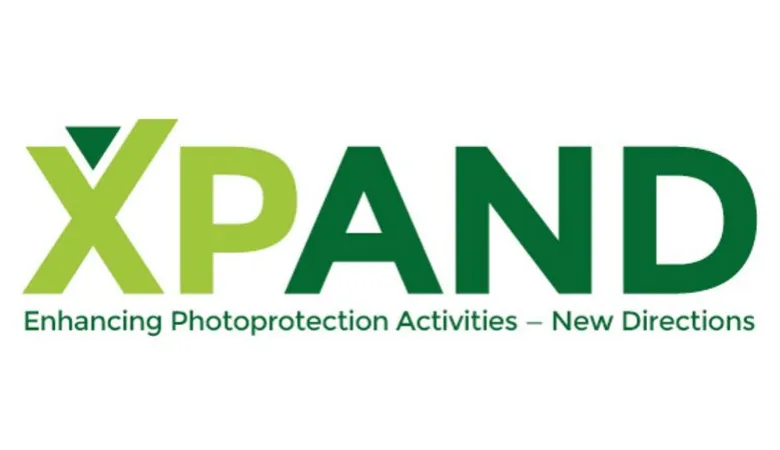XPAND Trial (Enhancing XP Photoprotection Activities – New Directions)
What is Xeroderma Pigmentosum?
Xeroderma Pigmentosum (XP) is an extremely rare genetic condition which stops skin repairing itself after damage from Ultraviolet Radiation (UVR). This means people with XP are much more likely to develop skin cancers than others. Some of the best ways to reduce this damage is to protect the skin from UVR, and to limit UVR exposure. Recommendations are to wear a UV protective face visor or face protection such as a wide brimmed hat and scarf to cover lower face, with UV protective glasses, and sunscreen. Consideration should also be given to timing activities to take place at times of the day when UV is at its lowest whenever practicable.
People with XP can find it hard to maintain this level of protection. And this can lead to an increase in skin damage and potential skin cancers.
When it comes to XP, the amount of UVR reaching the face matters. It is the most difficult place to protect and therefore the most common place for skin cancers to arise.
Our funder
This study/project is funded by the National Institute for Health Research (NIHR) [Programme Grant for Applied Research Scheme (RP-PG-1212 20009)]. The views expressed are those of the author(s) and not necessarily those of the NIHR or the Department of Health and Social Care.
Research Collaborators
| Professor Vera Araujo-Soares | Institute of Health & Society, Newcastle University, UK |
| Professor Mark Berneburg | Department of Dermatology Universitätsklinikum Regensburg, Germany |
| Professor Falko Sniehotta | Institute of Health & Society, Newcastle University, UK |
| Dr Jakob Heydenreich | Department of Dermatology, Bispebjerg Hospital, Copenhagen, Denmark |
| Dr Adrian Mander | MRC Biostatistics Unit, University of Cambridge, UK |
| Professor Paul McCrone | Formerly Health Service & Population Research Department, King’s College London, UK |
| Dr Meriem Jones | Hospital Charles Nicolle De Tunis, Tunisia |
| Professor Chikako Nishigori | Kobe University, Japan |
| Dr Kirby Sainsbury | Formerly Institute of Health & Society, Newcastle University, UK |
| Professor Alain Sarasin | Institute of Cancer and Genetics, Gustave Roussy Institute, France |
| Dr Rute Vieira | University of Aberdeen, UK |
| Professor Hans-Christian Wulf | Department of Dermatology, Bispebjerg Hospital, Copenhagen, Denmark |
| Professor Antony Young | St John’s Institute of Dermatology, King’s College London, UK |
Research Assistants
| Rebecca Anderson | Formerly School of Cancer & Pharmaceutical Sciences, King’s College London, UK |
| Katherine Johnstone | Formerly School of Cancer & Pharmaceutical Sciences, King’s College London, UK |
| Jonathan Spencer | Formerly Health Service & Population Research Department, King’s College London, UK |
Project Governance
| Dr Kavita Vedhara | University of Nottingham, UK |
| Dr David Wellsted | University of Hertfordshire, UK |
XP Clinical Team, Guy’s & St Thomas’ NHS Foundation Trust, UK
| XP Clinical Lead | Dr Hiva Fassihi | National Xeroderma Pigmentosum Service |
| Clinical Neuropsychologist | Dr Isabelle Garrood | National Xeroderma Pigmentosum Service |
| XP Nurse | Tanya Henshaw | National Xeroderma Pigmentosum Service |
| Honorary Consultant Scientist | Professor Alan Lehmann | University of Sussex |
| XP Nurse | Sally Turner | National Xeroderma Pigmentosum Service |
Patient & Public Involvement Panel
- Cathy Coleman
- Ben Fowler
- Ros Tobin
- Sandra Webb
Trials Design
What is the XP research programme?
Initial research showed that, despite awareness of risks, some people with XP can find it difficult to maintain consistently high levels of protection in daily life. The National Institute of Health Research (NIHR) funded this innovative project. We wanted to investigate why this was the case, how to support people with XP, and whether photoprotection could be enhanced by a behaviour change intervention. With the help of people with XP in the UK we carried out a number of research studies using different methodologies to gain a comprehensive understanding of the reasons behind poor protection. We also asked people with XP in France, Germany, USA, Japan and Tunisia to complete a survey to explore their perceptions of XP and photoprotection.
What is the XPAND Trial?
Using this knowledge, we then designed a programme of support, known as a behaviour change “intervention” to enhance photoprotection. We called the intervention XPAND – Enhancing Photoprotection Adherence – New Directions
In close co-operation with the clinical team at St Thomas’s, the research team defined general photoprotection standards (from poor protection to excellent) and a desired level of protection for participants to aim for. Poor protection was no face protection at all whilst excellent protection was complete face protection by wearing a UV protective visor. The desired level to aim for was very good – wearing a wide brimmed hat or cap with hoodie worn up, glasses, scarf or face buff to lower face and regular application of sunscreen factor 50+.
Outline of XPAND
- The intervention involves a tailored conversation with each participant looking at their adherence to photoprotection. It targets both the overall exposure to UVR and the methods of photoprotection used when outdoors.
- The intervention is delivered over seven sessions which are held face to face, via skype, or over the phone.
- The content of the conversation is dependent on the specific photoprotection behaviour being targeted (e.g., poor sunscreen application, being outside when UVR levels are highest) and the individual’s personal reasons for poor photoprotection. For example, low motivation related to doubts about the need to protect and concerns about protecting (e.g., other people will stare at me if I wear sunglasses when it’s not sunny). Other barriers to protection may be poor planning and lack of routines.
- The facilitator provides information tailored to these barriers (e.g., explanation of how protection reduces risk of skin cancer) and uses evidenced based behaviour change techniques to encourage the development of “better” photoprotection habits (e.g., setting SMART photoprotection goals and making action plans).
At the moment, we are testing whether XPAND does improve photoprotection by randomly allocating adults diagnosed with XP to either receive the intervention or to continue with standard care – the control group. We will compare the amount of UVR reaching the face between the two groups in two time periods in the summer (June-July; August 2018). We predict that the intervention group will have a lower mean daily dose of UVR to the face compared to the control group. We will also deliver XPAND in 2019 to our control group and combine the data from both groups to look at its impact on photoprotection before and after participants received XPAND. We will also investigate the impact of the intervention on psychological factors, such as beliefs about the necessity of photoprotection, confidence in the ability to protect and the extent to which protection is habitual. Participants’ experiences of XPAND will be explored and are an important part of our evaluation.
The intervention is designed to be administered by a range of professionals, and it is anticipated that, if successful, it will be incorporated into clinical practice by the XP team based at St Thomas’ hospital.



